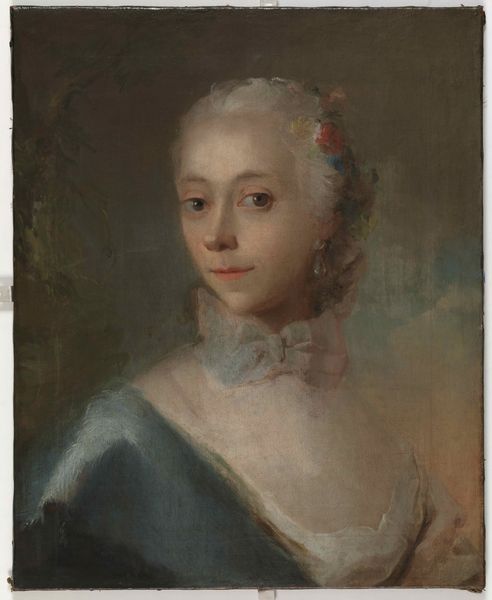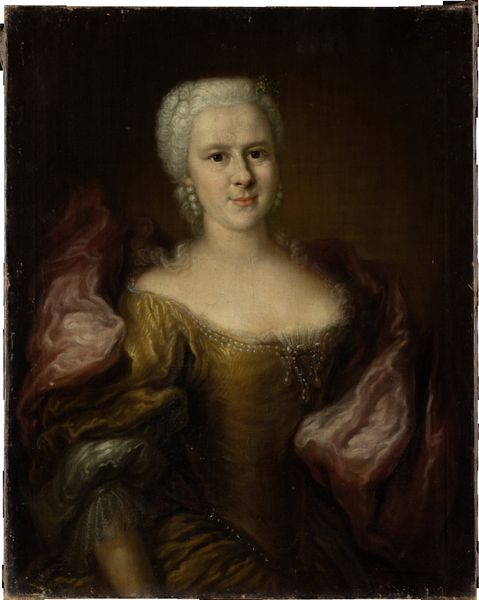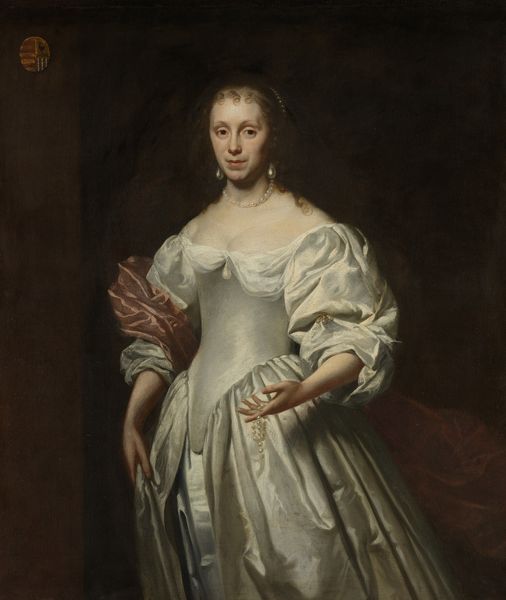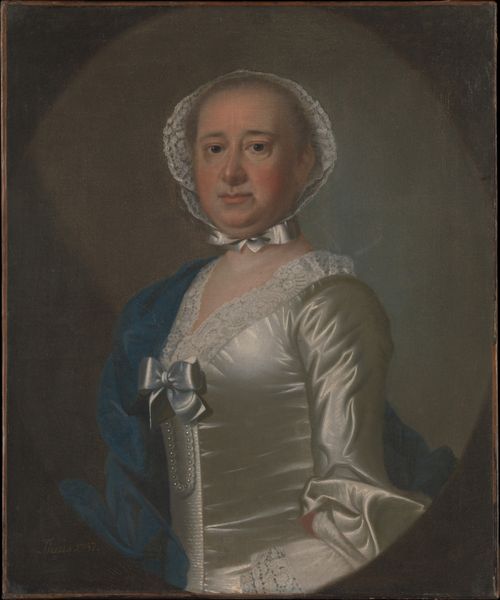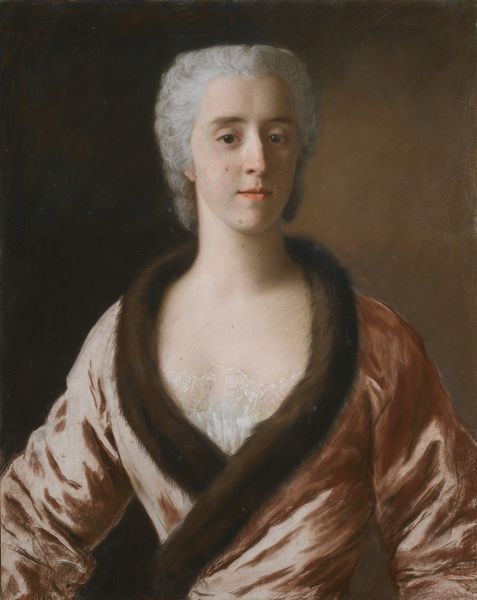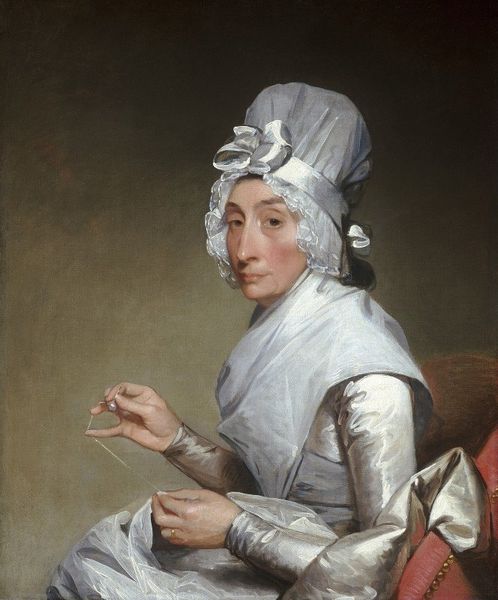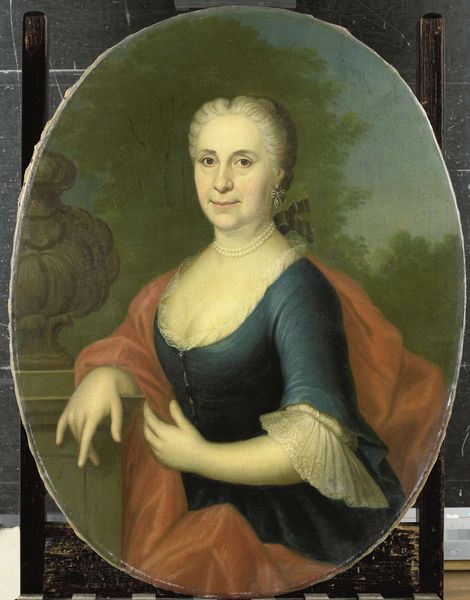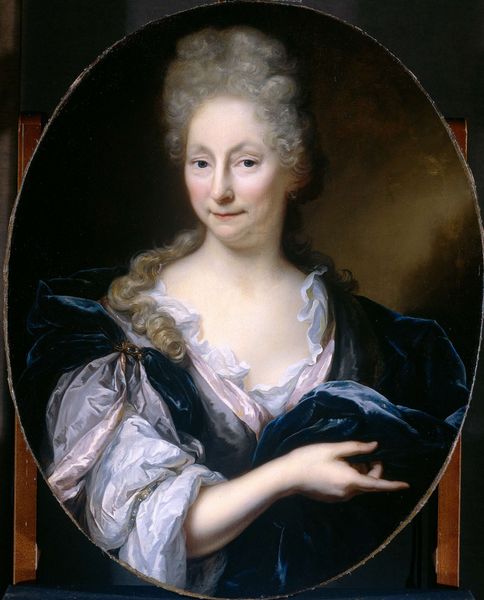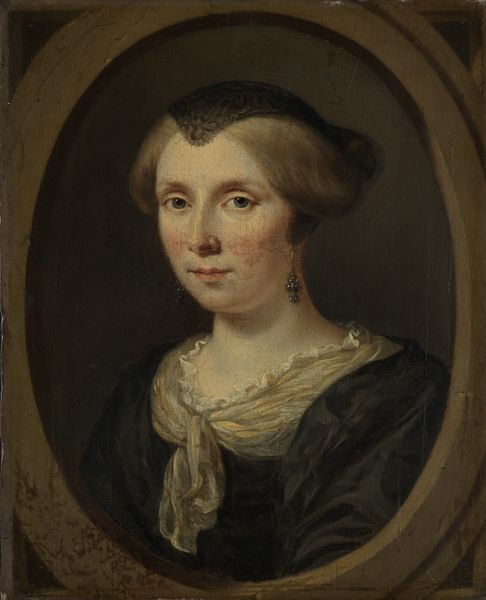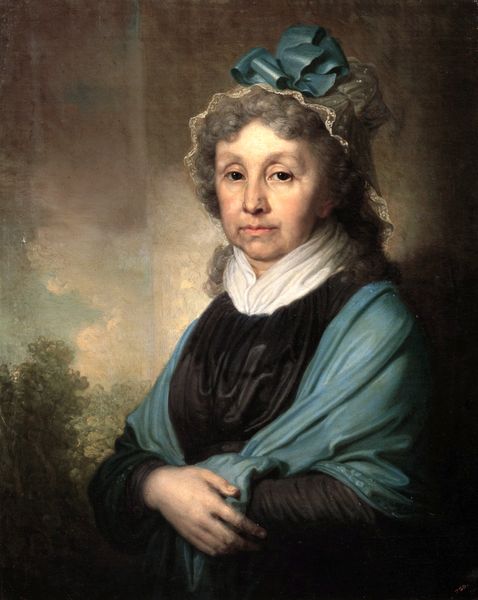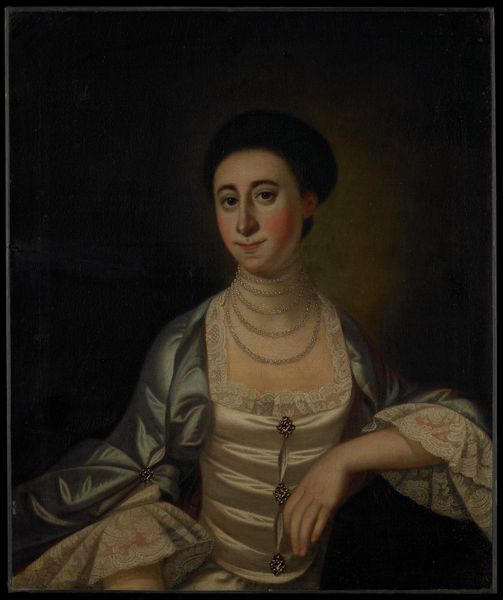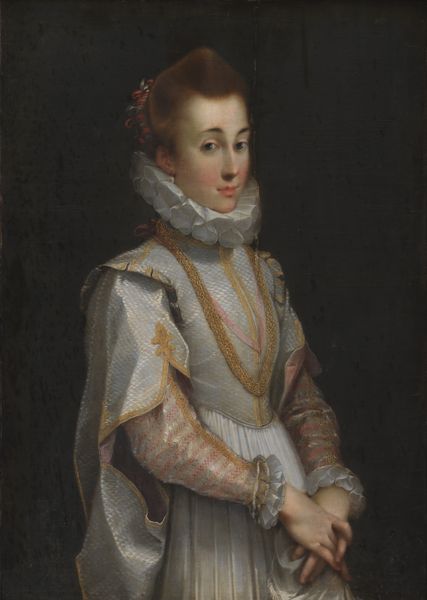
painting, oil-paint
#
portrait
#
painting
#
oil-paint
#
genre-painting
#
rococo
Dimensions: 72.2 cm (height) x 53.7 cm (width) x 2.1 cm (depth) (Netto)
Editor: Here we have C.G. Pilo’s oil painting "Portræt af Elisabeth Marie Fabritius, født d'Abbestée" from 1752. There's a certain reservedness about her expression. What can you tell me about this piece? Curator: Pilo’s portrait provides an intriguing window into the lives of 18th-century women and the construction of female identity. Consider the pose, the attire, even the muted color palette. How do these elements reinforce or subvert the expectations of women in that era, particularly within the context of their social class? Editor: I see what you mean. Her clothes signal a certain status, but her gaze seems directed beyond that status. Curator: Precisely! The Rococo style, with its emphasis on elegance and aristocratic taste, often masked the social realities of the time. Do you think Pilo’s rendering of Elisabeth, with her knowing expression, challenges the purely ornamental role often assigned to women in portraiture? How does her clothing simultaneously define and perhaps limit her position? Editor: That's a good point, especially considering the emerging discourses around women's rights at the time. I guess I had initially overlooked that she has a knowingness beyond the mere status suggested by her clothes. Curator: And that "knowingness," as you call it, is precisely where the painting's subversive power lies. It's a starting point to examine how women navigated social structures and expectations. Understanding this can also help us confront issues around gender and representation today. Editor: This has given me a lot to consider. Looking beyond the surface is vital to appreciate not only the artistic but also the social nuances. Curator: Exactly. And the nuances can be different for each viewer. Let us both think about those differences.
Comments
No comments
Be the first to comment and join the conversation on the ultimate creative platform.
